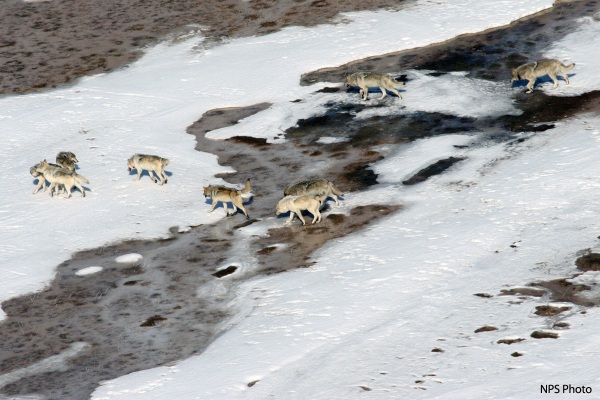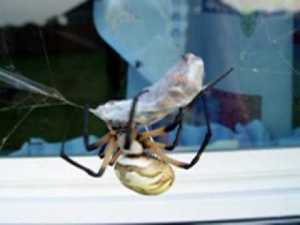My Interview on Good Poetry Podcast
January 18, 2020

I recently chatted with Andrew Coons of the Good Poetry podcast. I read from my books, Dwelling: an ecopoem and Falling Up: A Memoir of Second Chances, and talk about poetic mentors and influences, conservation, and a range of interrelated topics.
Give a listen:
“Run the river toward something”: Scott Edward Anderson on Our True Connection with Nature — “In the Balance” Podcast
October 28, 2018
This week, I had the pleasure of speaking with Susan Lambert for her In the Balance podcast. We talk about my new book, Dwelling: an ecopoem, and how we can repair our rift with the natural world. Give a listen…
Scott Edward Anderson speaks the language of the earth. His new book Dwelling: an ecopoem encourages us to discover a more balanced relationship – an interrelationship – between human beings and the earth.
He urges us to “give back to the earth what is hers.” He reminds us that the earth doesn’t need us. She will be fine. We are the ones who need to adapt, change and have empathy for the earth. Scott’s beautiful book helps us begin to heal that fractured relationship.

Wolf pack, Yellowstone. (NPS Photo)
In the title poem to her latest book of poems, Trophic Cascade, Camille T. Dungy catalogues the reemergence of species in the wake of the reintroduction of gray wolves to Yellowstone National Park.
In ecology, “trophic” refers to the relationships between species in a food chain or web. While in some respects this is both a list poem and a nature poem, it builds (or cascades) with such a “degree of motion and momentum” (to quote the poet in an essay) that it becomes something more.
Dungy mimics the kind of rhythmic swells leading to a break at the end of her line that one sees or hears in an ocean tide, and it’s the kind of rhythm and cadence the poet says she wants to achieve in her poems. But what I love most about this poem is how Dungy pivots at the end—in a way representative of how so much of her poetry works—with what she calls, in the same essay to which I refer above, an “inevitable surprise.”
“We know the line will break, and we might even have an idea of where and how the physical boundary might present itself on the page, and that is part of the beauty,” Dungy writes. “But for that beauty to work to its full potential there must also be much that comes as a surprise.” That surprise, in this case, puts a whole new perspective on our most basic trophic relationship.
Camille Dungy is the author of three other books of poetry, including Smith Blue, Suck on the Marrow, and What to Eat, What to Drink, What to Leave for Poison, as well as a fabulous memoir-in-essays, Guidebook to Relative Strangers. She also edited the important anthology, Black Nature: Four Centuries of African American Nature Poetry, and has received an American Book Award, two Northern California Book Awards, and an NEA Fellowship.
Here is Camille T. Dungy’s poem, “Trophic Cascade”
After the reintroduction of gray wolves
to Yellowstone and, as anticipated, their culling
of deer, trees grew beyond the deer stunt
of the midcentury. In their up reach
songbirds nested, who scattered
seed for underbrush, and in that cover
warrened snowshoe hare. Weasel and water shrew
returned, also vole, and came soon hawk
and falcon, bald eagle, kestrel, and with them
hawk shadow, falcon shadow. Eagle shade
and kestrel shade haunted newly-berried
runnels where mule deer no longer rummaged, cautious
as they were, now, of being surprised by wolves. Berries
brought bear, while undergrowth and willows, growing now
right down to the river, brought beavers,
who dam. Muskrats came to the dams, and tadpoles.
Came, too, the night song of the fathers
of tadpoles. With water striders, the dark
gray American dipper bobbed in fresh pools
of the river, and fish stayed, and the bear, who
fished, also culled deer fawns and to their kill scraps
came vulture and coyote, long gone in the region
until now, and their scat scattered seed, and more
trees, brush, and berries grew up along the river
that had run straight and so flooded but thus dammed,
compelled to meander, is less prone to overrun. Don’t
you tell me this is not the same as my story. All this
life born from one hungry animal, this whole,
new landscape, the course of the river changed,
I know this. I reintroduced myself to myself, this time
a mother. After which, nothing was ever the same.
c) 2015 Camille T. Dungy, from Trophic Cascade, Wesleyan University Press, 2017
Used by permission of the author.
The Hamline University English Department recently conducted an in-depth Q&A with me about two of my poems, “Naming” and “Villanesca.”
Here is a link to their blog, Hamline Lit Link, where it was posted: Read more

Wasps, Spiders, and My Poem “Opportunity”
May 22, 2014
 This week’s prompt at 52, the poetry group I joined this year to challenge me to write a poem each week during the year, is about insects.
This week’s prompt at 52, the poetry group I joined this year to challenge me to write a poem each week during the year, is about insects.
As Jo Bell writes in her introduction to the prompt, “Insects buzz and flutter and sting the air around us.
“They have us outnumbered, and they will outlast us. Insects thrive in every evolutionary niche – from the bluebottle, living on excrement and unpopular in the kitchen, to the Wandering Violin Mantis (yes, really – watch this to see it and its curious friends).”
As readers of my poetry know, observations in nature are a major subject of mine, especially birds. Whether the moths and butterflies featured in my poem, “The Postlude, or How I Became a Poet,” or the mining bees that open, “Redbud & Pitbull,” or the cecropia moth that is or isn’t the subject of my poem, “Summer Love,” insects are also not strangers to my poetry lens.
“Opportunity,” which appears in my book FALLOW FIELD, was originally published in the journal Blueline. It was prompted by a scene I witnessed in The Nature Conservancy’s Adirondacks office in Keene, New York, in the 1990s.
The poem centers around an interaction between an insect (wasp) and an arachnid (spider). Spiders are among the most remarkable predators on the planet. The spider featured in the poem was a web-hunting spider, a form of hunting that requires delicacy, building skills, and not a small amount of patience. (For more on how such spiders catch their prey, check out this illustrated description.)
Here is my poem, “Opportunity”:
A wasp wrestles all day
with the false freedom
of a window pane.
Scaling the glass, then slipping
down, buzzing the cracked paint
of the old window frame.
As if thrumming wings faster
will pull it closer to the blossom,
just beyond its reach.
So determined in its struggle
to get in, to wrest pollen from
the exotic flower on the other side.
A spider sets its dinner table
in the corner of the pane—
–Scott Edward Anderson
Misidentifying Moths and My Poem “Summer Love”
June 23, 2012
My old friend and former decompositionalist compatriot, Penny Perkins, posted a gorgeous picture of a moth on Facebook today, which she misidentified as an “Endangered Emperor Moth.”
I recognized her mistake right away. The moth was, in fact, a Luna moth (Actias luna) and not Saturnia pavonia.
I noted this on her post in the comments section and also the fact that neither moth is endangered. She thanked me and then asked if, perchance, I had any poems about moths. I did or do.
(At least, I thought it was about moths. I’m never sure anymore what I was writing about when I wrote a poem!)
Here is my poem “Summer Love”:
The female cecropia moth,
Hyalophora cecropia, emerges
As in a stop-action film: swollen
Abdomen shrinking while wings
Rise, fill, and form. Pheromones
Kick in, attracting a male from miles away.
They couple quickly—how easy love can be.
Linked like this, at terminus,
They are most vulnerable to predators.
They will stay this way, available
To each other, for hours—
Then vanish as memory fades.
–Scott Edward Anderson


